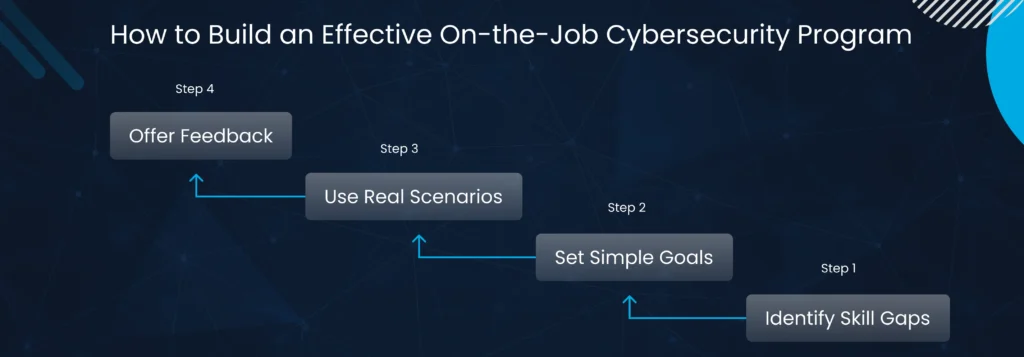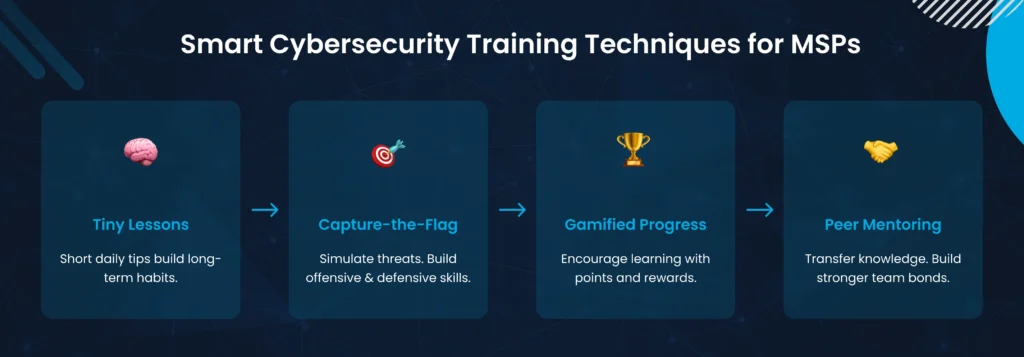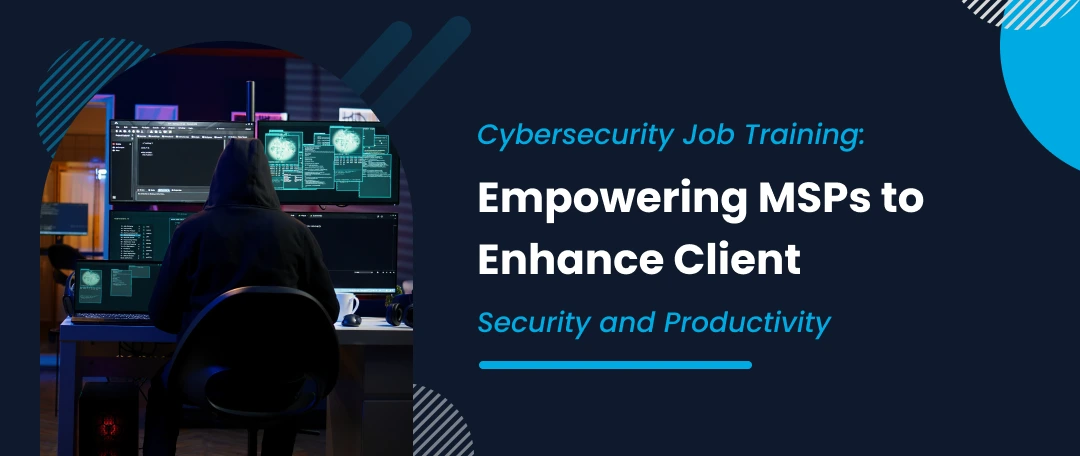Implementing On-the-Job Cybersecurity Job Training for MSPs Programs
Cybersecurity on the job training involves real tasks where teams learn to stop, spot, and fix dangers. Cybersecurity job training for MSPs helps staff gain knowledge in practical ways as they manage various client systems. Seeing firsthand how networks, tools, and threats interact develops a deeper level of understanding than studying theory alone.
How to Build an Effective On-the-Job Cybersecurity Program

1. Identify Skill Gaps
Start by pinpointing where your team needs more support. Whether it’s network monitoring, responding to incidents, or secure system configuration, you’ll get better results when you know what needs work.
2. Set Clear, Simple Goals
Break tasks into small steps. For instance, have a junior tech watch a senior perform a vulnerability scan, then let them practice the same task with coaching.
3. Use Real Scenarios
Apply real data or run safe simulations. Simulated phishing emails or mock breaches can mimic the stress and complexity of real attacks—without the risk.
4. Offer Ongoing Feedback
Encourage questions. Share advice regularly. Mistakes are part of the learning process, and talking through them helps everyone grow.
Cybersecurity job training helps MSPs protect entire IT networks. Paid cybersecurity training, hands-on lessons, and a focus on evolving threats give your team the depth it needs. This higher skill level builds client confidence and ensures smoother day-to-day operations.
Groups that invest in well-planned programs—from simple certificates to advanced mentorship—often see strong rewards. Spending time and resources on training can lower breach expenses, strengthen team spirit, and enhance an MSP’s image. Even smaller training steps can serve as an effective shield against rising cyber threats. Cybersecurity job training for MSPs is essential.
Business leaders who want to stay ahead of trouble can explore recognized groups like (ISC)², CompTIA, Offensive Security, or government-supported programs for training. Creating a culture of ongoing learning often begins with managers who value development. Adding simple cybersecurity practices into daily routines shows clients that MSPs take security seriously and stay involved in day-to-day protection.
Why Cybersecurity Job Training for MSPs Matters

Cybersecurity job training for MSPs isn’t just helpful—it’s necessary. When your team builds skills through hands-on practice, your whole operation runs smoother. Clients notice, too. They trust MSPs who invest in training, especially when it leads to fewer errors and quicker responses to issues.
Even small improvements—like daily quick tips or group exercises—can help prevent bigger problems. MSPs that commit to training usually see fewer breaches, better teamwork, and stronger long-term relationships with clients.
Smart Training Techniques MSPs Can Use
Tiny Lessons During the Workday
Instead of scheduling long sessions, share short, focused lessons. For example, take five minutes to explain how to encrypt files before sending them to clients.
Capture-the-Flag Style Challenges
These hands-on activities challenge staff to find and fix hidden issues. They teach people to think like attackers and build defensive habits.
Gamify the Process
Award points or badges for spotting phishing attempts, fixing mock vulnerabilities, or completing practice drills. Friendly competition keeps interest high.
Use Peer Mentoring
Pair less-experienced staff with senior team members. It’s a great way to transfer knowledge while building a stronger team culture.
MSP leaders who want a competitive edge should take a close look at their cybersecurity processes. Check where your team may need more learning, then explore options like paid cybersecurity training, internships, or step-by-step skill programs. Begin by reviewing your current defenses and identifying the parts that need attention. Then pick the best mix—formal coursework or daily, hands-on sessions—to meet your goals. For extra guidance, visit groups like (ISC)², CompTIA, or specialized training providers who focus on MSP priorities. Take the next step toward stronger security by building a culture of learning that keeps all parts of your IT systems safe.
To conclude, if you’re an MSP looking for an easy way to boost client security, ClipTraining has short, practical lessons that help employees spot and handle online threats. Book a demo to see how our training fits your services, lowers risks, and helps keep data safe.


